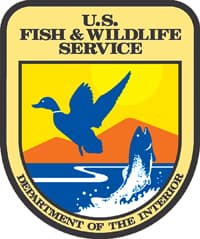As Water Availability Increases, Hunting Opportunities Improve
OutdoorHub 11.06.12

The 2012-2013 waterfowl hunting season opened in October, and the U.S. Fish and Wildlife Service wants to remind hunters that hunting programs on national wildlife refuges in California, Nevada and southern Oregon are in full swing. Wetlands on most refuges have been flooded to capacity, providing prime habitat for the tens of thousands of migrating waterfowl and increasing hunt area availability.
There are 25 national wildlife refuges in California, Nevada, and southern Oregon with waterfowl hunting programs, and each offers a unique experience. Hunters can experience the remote desert wetlands at Ruby Lake National Wildlife Refuge (NWR) in Nevada, marshes in the shadow of majestic mountains at the Klamath Basin NWR Complex in northern California and southern Oregon, and wetlands near urban areas such as Don Edwards San Francisco Bay NWR near San Francisco.
“There are many excellent opportunities for hunting on national wildlife refuges in California, Nevada, and the Klamath Basin of southern Oregon,” said Dave Linehan, refuge supervisor for California and Nevada. “Hunting is one of the more popular recreation opportunities on refuges and hunters typically experience a quality, well managed hunt.”
With hunting season beginning with drier than normal conditions and reduced water availability on several refuges in California, fewer hunting units were available, requiring refuge managers to work harder to overcome those obstacles. Sutter NWR near Yuba City, Calif., part of the Sacramento NWR Complex, experienced water shortages and was unable to flood enough wetlands to support a quality hunt for the season opener on October 20. However, increased water availability allowed Sutter NWR to open to hunting on October 27. Refuge wetlands are expected to be fully flooded by November 17. Status reports and hunt results are available online at: http://www.fws.gov/sacramentovalleyrefuges/ht_hunting.html.
Wetlands on Klamath Basin NWR Complex’s five refuges were also affected by dry conditions, limiting early season opportunities. However, conditions have improved, and more hunt units have opened. “There are plenty of hunt opportunities available on Tule Lake and Lower Klamath refuges, “ said Greg Austin, deputy project leader at Klamath Basin NWR Complex. “Both areas provide hunters with the options of hunting on wetland units or grain field units, and units accessible by either boat or walk in.” Scouting is highly recommended for both refuges, especially if a hunter hasn’t hunted the unit before. Knowledge of the area will lead to a more successful, quality hunting experience. Hunt updates, water status reports, and hunt results can be found on the Klamath Basin NWR Complex website or Facebook page. http://www.fws.gov/klamathbasinrefuges/index.html
At the southern end of the San Joaquin Valley, Kern NWR has also had to work through water issues this hunting season. The refuge is known as a prime duck hunting location close to Los Angeles. Even with the short delay, hunters have not been disappointed. Over the past few weeks, the refuge has been able to flood more waterfowl habitat and hunting units, thus increasing the quality hunting opportunities. “As conditions improve, we’ve been able to open more hunting blinds,” said Shannon Ludwig, project leader at Kern NWR. “As the water increases, so have the waterfowl, and hunters are averaging five birds per hunt.” The refuge opened an additional four blinds this past weekend, and will open another free roam unit on November 7. For hunt unit maps and hunt area updates, visit: http://www.fws.gov/kern/refuges/kern/recreation/.
Hunters on federal refuges must follow both state waterfowl regulations and specific regulations that may be in place on each refuge. Season opening and closing dates are determined by the state in which the refuge is located. Hunters must possess valid hunting licenses for the state they are hunting in, as well as a signed Federal Duck Stamp, specific state waterfowl stamps, and a free Harvest Information Program (HIP) validation. For more information about regulations, including bag limits, visit these websites: California http://www.dfg.ca.gov/Hunting/, Nevada http://ndow.org/hunt/seasons/mig/, and Oregon http://www.dfw.state.or.us/resources/hunting/waterfowl/.
For a complete list of refuges within the Pacific Southwest Region that have waterfowl hunting programs, and websites providing detailed hunting information for each refuge, go to http://www.fws.gov/cno/hunting.html.

